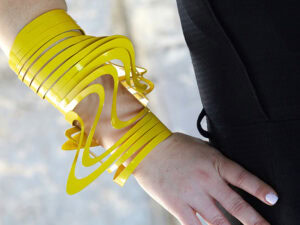
Writing about art (or music) is like dancing (or sometimes singing, or occasionally knitting) about architecture, or maybe football, as once quipped either comedian/art collector Steve Martin, or comedian/artist Martin Mull, or maybe musician/comic actor Elvis Costello, or possibly even experimental satirist/Zappa-esque musician Frank Zappa.
As Louis Bury observes in his review of Gilda Williams’s How to Write About Contemporary Art, this “writing about art” simile—as much as it fails to be attributable to any one source—fails also to fully explain the complexities of producing even the most barely intelligible art writing. It’s not that art can’t be written about, it’s that the people writing about art could be doing it better. The Information Age continues to breed more information consumers, which means a rising demand for content—which in turn means the “/writer” hyphenate is getting passed around fast and furious in order to keep up production and meet that demand.
As Bury himself quotably quips, “When everyone is an artist, everyone is also eventually pressed into service as an art writer.” But just because everyone’s an art writer doesn’t mean everyone is good at art writing—Gilda Williams would no doubt agree that not every writer deserves a trophy for their efforts. Fortunately she wrote a book to remedy just that situation. (And AJF has a place for writers who aren’t just in it for the trophy.)
If everyone is an artist and an art writer, then it follows that everyone is now also a curator—a phenomenon Miya Tokumitsu examines for the New Republic. “Curate” used to be a task that required at least an MFA and a pair of white cotton gloves; it now describes the careful accessioning of materials for one’s Pinterest board or Instagram feed. Once upon a time your local coffee shop offered a “choice” between regular and decaf; now you are presented with “a curated selection” of Ethiopian Cognac Bean, Peruvian Fennel Root, or Tanzanian Birdnut.
Tokumitsu argues this is due to something beyond the mere “prestige appropriation” of the handlebar-mustachioed 28-year-old who owns an artisanal goat cheese shop with a Victrola listening room. Instead, she frames the curation craze as a mass compulsive behavior—a culture-wide psychological impulse to restore order to lives traumatized by economic instability.
After a few deep breaths, those of us who haven’t yet lost a basic faith in humanity remember that many people who use Facebook recognize a difference between Facebook “friends” and “real” friends; by the same token, many of us are capable of recognizing the massive amounts of paperwork that mark the difference between “real” curators and casual social media users. Perhaps we can quell our collective anxiety if we all just accept as fact that we live in a world where everyone is an artist, an art writer, a curator, a critic, and a comedian—then no one should have any reason to feel threatened. Nobody’s special and we’re all geniuses. Eventually, naturally, with the gentle passage of time, the curatorial wave will crest, returning us once again to a regular-or-decaf world that no one feels compelled to blog about.




